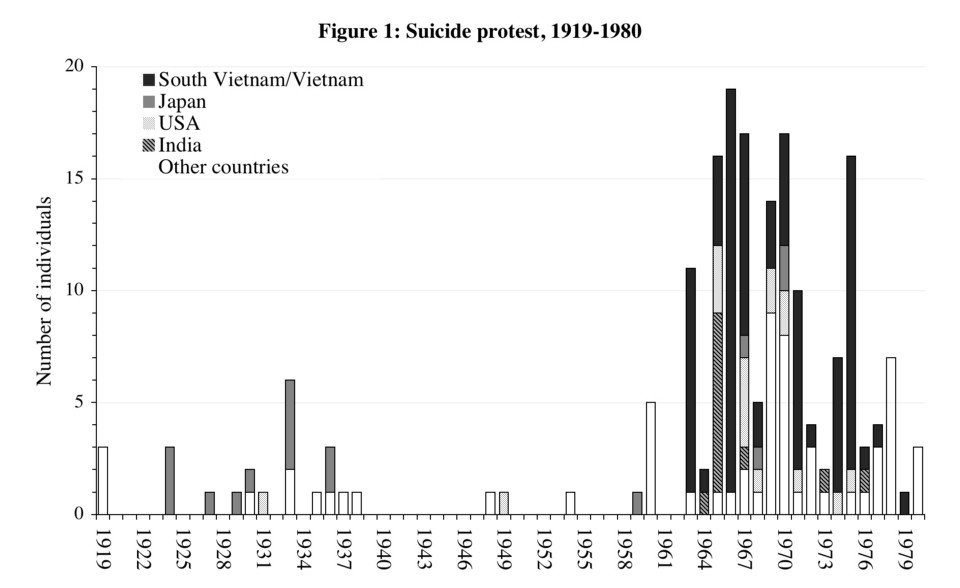New ways of protest are being invented every day, with a society’s repertoire of contention in constant evolution. The latest addition is a deadly one.
By Lisa Wade
Dylann Roof boards a plane at Shelby-Cleveland County Regional Airport for extradition back to Charleston, South Carolina, on June 18th, 2015. (Photo: Andy McMillan/Getty Images)
If there’s one thing Americans can agree upon, it might be that people shouldn’t be indiscriminately firing guns into crowds, no matter how angry they are. The shooting in the Ft. Lauderdale airport is just the latest example. Mass shootings are on the rise and I’m fearful that what we are seeing isn’t just an increase in violence, but the rise of a new habit, a behavior that is widely recognized as a way to express an objection to the way things are.
To register an objection to something about the world, a person or group needs to engage in an action that other people recognize as a form of protest. We know, in other words, what protest looks like. It’s a strike, a rally, a march, a sit-in, a boycott. These are all recognizable ways in which individuals and groups can stake a political claim, whereas other group activities — a picnic, a group bike ride, singing together — are not obviously so. To describe this set of protest-related tools, the sociologist Charles Tilly coined the phrase “repertoire of contention.” Activists have a stock of actions to draw from when they want to make a statement that others will understand.
A culture’s repertoire of contention is in constant evolution. Each tool has to be invented and conceptually linked to the idea of protest before it can play this role. The sit-in, for example, was invented during the early civil rights movement. When African-American activists and their allies occupied white-only restaurants, bringing lunch counters to a halt to bring attention to the exclusion of black people, they introduced a new way of registering an objection to the status quo, one that almost anyone would recognize today.
New ways of protesting are being invented every day: the hashtag, the hacktivist, and shutting down freeways are some newer ones. Some become part of the repertoire. Consider the chart below by sociologist Michael Biggs, which shows how suicide as a form of protest “caught on” in the 1960s:

I am afraid that mass murder has become part of the repertoire of contention. This is theoretically tricky — others have fought over what really counts as a social movement action — but it does seem quite clear that mass murder with a gun is a more familiar and more easily conceptualized way of expressing one’s discontent and then it was, say, pre-Columbine. If a person is outraged by some state of affairs, mass killing is a readily available way to express that outrage both technically (thanks to gun regulation) and cognitively (because it is now part of the recognized repertoire).
Dylann Roof wanted to register his discontent with the place of black people in American society, Robert Lewis Dear stormed a Planned Parenthood with a pro-choice message, Elliot Rodgers was angry about women’s freedom to reject him, Omar Matteen killed dozens to express his (internalized) disgust for homosexuality, Gavin Long communicated his sense of rage and helplessness in the face of black death by killing police. At some point each thought, “What can I do to make a difference?” And mass murder came to mind.
In the aftermath of such events, the news media routine contributes to the idea that mass murder is a form of protest by searching for an explanation above and beyond the desire to kill. That explanation often positions the rationale for the murder within the realm of politics, whether we call it terrorism, resistance, or prejudice. This further sends the message that mass murder is political, part of the American repertoire of contention.
The terrifying part is that, once protest tools become part of the repertoire, they are diffused across movements and throughout society. It’s no longer just civil rights activists who use the sit-in; any and all activists do. Perhaps that’s why we see such a range of motivations among these mass murderers. It has become an obvious way to express an objection that the discontented can be sure others will understand.
This story originally appeared on Sociological Images, a Pacific Standard partner site, as “Is Mass Murder Now Part of the Repertoire of Contention?”





